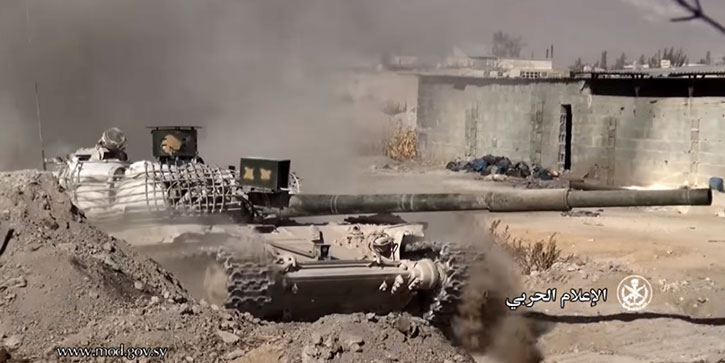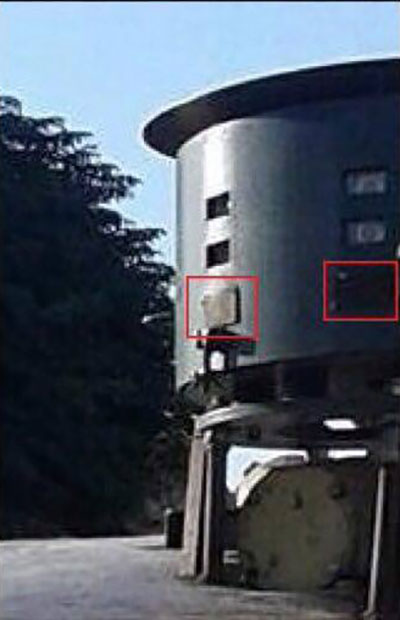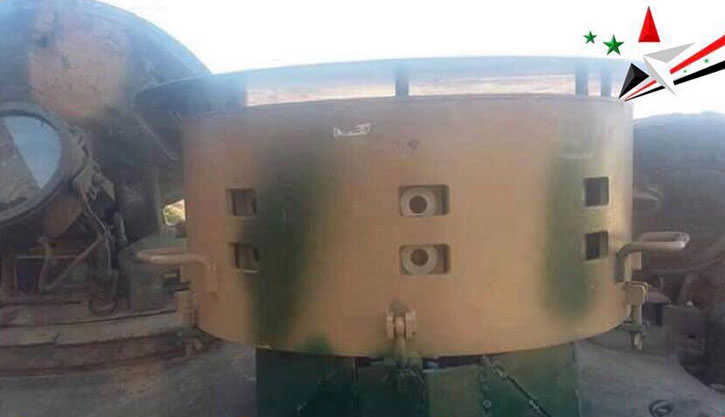Since 2012 and through the recent fighting, particularly in Northern Syria, the Syrian forces have suffered significant losses to rebels anti-tank guided weapons. The ability of rebels to attack and destroy the Syrian tanks from long range devastated the Syrian troops’ morale.

In the recent months the Syrian Army, supported by Iranian-backed Hezbollah and Russian air and ground forces, regained a significant foothold in areas previously dominated by Syrian opposition and ISIS. The loss rate of its armor has also diminished, not because of a shortage of rebel weapons. The Syrians claim that the deployment of new countermeasures locally developed by the Syrian Scientific Research Center (SSRC) dramatically reduced the vulnerability of their armor to rebel guided missiles attacks. This article tracks the evolution of these systems and outlines the progress, based on combat experience gained by the Syrians.
IR countermeasure technologies are available from multiple sources, both in the East and West, but none were accessible to Syria. The SHTORA, an integrated defensive system designed for the T-90 could not easily adapt to the T-72, T-62 and T-55s. To address the threat the SSRC developed an Infrared jammer designed to disrupt the optical command line used by 2nd generation Semi-Active Command to Line Of Sight (SACLOS) guided missiles such as the Konkurs, Metis and Tow.

The system is a light source that mimics the signal emitted by the flare positioned at the missile’s tail, feeding false positional information to the command system’s sensor, thus causing the missile to miss its target. The Israeli army first introduced this principle in Lebanon in the 1990s. It was later and adopted by the Russian army with the SHTORA system developed for the T-90. However, lacking specific data on the threat missiles, the required more testing with real missiles to turn their technology demonstrator into a combat worthy protection system.
By the end of 2015, the Developed by the SSRC managed to acquire few of the TOWs delivered to the Syrian rebels. (Syrian intelligence agents simply bought 18 from the Free Syrian Army…) These missiles helped SSRC to modify and test the system, and deploy the first batch of operational systems designated Sarab-1 (Mirage) in early 2016. (These systems were spotted on T-62s and gun carrying pickup trucks near Latakia). These systems used powerful Infrared LED lights and magnifying lenses that demonstrated 80% effectiveness against various SACLOS missiles. The entire system included multiple emitters covering the frontal arc. Connected to the vehicle’s battery the system could maintain continuous operation for about six hours.

A follow-on system designated Sarab-2 were completed and delivered to combat units towards the end of 2016. The Sarab-2 improved over the first generation by using multiple emitters that could mimic the vertical movement. A protected casing was added as well. As the first version, Sarab-2 covered only the frontal arc (about 180 degrees). Reduced power consumption and improved batteries enabled the system to maintain 10 hours of operation without charging. According to Syrian sources, the Sarab-2 was completed and successfully deployed in the battle of Aleppo, effectively defeating the Free Syrian Army (FSA) TOWs. In fact, the Syrian sources say that in the later stages of that battle TOWs were directed exclusively against infantry and other infrastructures since the targets protected by Sarab were immune to these threats.
Following the successful fielding of Sarab-2 the SSRC developed a new version of the system, utilizing additional emitters (possibly laser sources) to establish more efficient ‘soft kill’ active protection for tanks. Unlike Sarab-1 and 2, the Sarab-3 has a full 360-degree coverage.
While the wide publicity the system received could be motivated by the need to boost morale among the Syrian soldiers, defense analysts should be aware of the development and consider the proliferation of such technology, in defeating 2nd generation guided missiles with third world countries and insurgent groups.





















